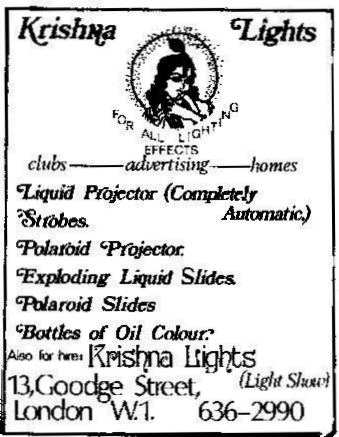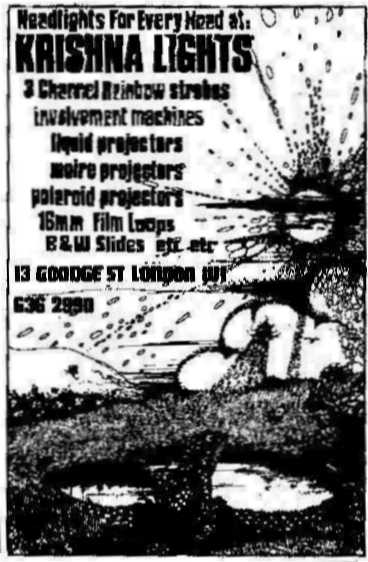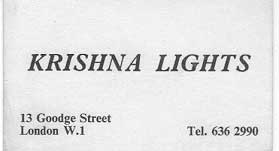Projected light---oil & pattern, some history
The Oil Wheel
Before the oil wheel we all now know, there were a number of different setups for creating coloured projected light, with moving effects. Famously the overhead projector method as used by Joshua White and old slide projectors with coloured gels, 2x2 slide glass with solvent inks and more.
Most of the liquid type was a very messy business, involving putting water and coloured oils or inks into a dish(usually a clock face glass), shining a light thru it and focusing with a lens. Overhead projectors (like those still in use today) often served as a light source and means to project the image created.
The liquid mix was shaken, stirred or blown with a straw and added to by an operator, in rhythm to the music, creating ever changing psychedelic images, this was typically the american method. Some use of projectors was made in the uk using liquids in plastic bags and in square slides (glass2x2 and using solvent base inks). There were other effects too, using motorised wheels with coloured gels and bright lights, and even the old faithful cine projector. Very early effects used painted glass rotated in front of stage lights then focused with a crude lens.
Now along come some innovators around 1968. We have Phil Brunker of Optikinetics fame, using the messy lighting stuff, working with the guys as part of Krishna Lights. (He later formed a show named 'Lovelights' , and did some work for Roger Squires disco).
Jimmy Doody (James Patrick Bartholomew Doody) at the same time (also Krishna Lights) was fiddling with things the same as Phil and they both chucked the slides and plastic bags of liquid away and decided to seal the oils between glass plates. They had been playing with projectors and made effects using liquids in plastic bags, square slides (glass) among other things.
It would seem that these two guys are responsible for the oil wheel we know today. Though both had a claim to this invention, Jimmy did argue for a number of years about who owned the rights to this. The majority of the first wheels were made by Phil Brunker , Jimmy Doody would later buy them from him for his own business ventures. Jimmy actually obtained a Patent for the liquid oil wheel. By now it was evident that there was money to be made. And so the later demise of Krishna Lights then gave us Pluto Electronics, and Optikinetics. There is plenty on the web about both and how they were formed if you want to know more.
What we have now then is a nice clean automated way of producing something like the oily displays seen previously. You just bolt a motor onto a slide type projector, fix the glass wheel to it and hey presto! It's loads easier, needs no intervention and is heaps brighter to boot due to the chosen projectors that were modified (mainly the Rank Tutor and Tutor II). The impact of this effect for the music industry cannot be described in words, it's a bit like seeing the first movie or first TV picture I guess.
Easy to set up, and transport but lacking one thing. Although the effect is brilliant and always changing, we have lost the input from the operator that made it gyrate to the beat. It would take some years before this enhancement would be put back into the equation by Phil and his Optikinetics Company, automated by electronics but now on kinetic 3" effect cassettes.
So the oil wheel was born, and you wonder why is it called a 6" wheel? Well that’s because it was 6"! This is presumably because it needed to be that size to get the wheel to cover the light source lens of a projector. Remember projectors made for wheels were not around then and so the wheels were made to fit the projector!
Later when commercially available projectors were selected and modified (most common was the Rank Tutor II), the wheels were cut to the now common size of 5.75". In the beggining you could probably get your wheel any size you needed it.
Phil Brunker and his colleagues were knocking out wheels, modifying projectors and supplying these to a host of retailers for some time. Deciding the time was right to make a business out of this endeavor, we have the formation of Optikinetics in 1970, based at Hatfield.
Still producing the oil wheels to this day and doing very well, I thank Phil Brunker for his help in my quest to find out just who it was that gave us the oil wheel, and for the timeless effects he and Optikinetics have produced (and continue to do so) over the years.
Alternatives to the oil wheel
Modified projectors were now more common and of course the Gate part of these had similar dimensions to accommodate the motor and wheel, time to stick something different into the gap!
Not content with just oil wheels Neil Rice and Keith Cannadine, part of the newly formed Optikinetics, came up with the idea of using patterns to project. At the same time, remember Jimmy Doody ? Well he also traveled the same path. So now we have the birth of the 3" cassette.
From 1970 onward we have a host of other companies jumping onto the obvious business opportunity as the scene shifts from live band to disco. It must be said though that the majority of the projectors and oil wheels up to then were supplied by the founders of the effect (mainly from what would become Optikinetics) and just 'badged' by whoever was selling them. This did change when Optikinetics formed and later started marking their goods with the brand name. The same can be said for Jimmy Doody and Pluto lights. Projected moire effects were not new but the humble cassette was (as a projection medium that is, hand crank victorian view types had been known from the turn of the century).
Alternatives
Over the years a few other tweaks to effects have produced all the stuff we take for granted today. One of the more true to the origininal oil effects is the 'splodascope', oils in thin chambers with air pumped through the oil giving a quite unique effect. It looks like it is in rhythm with the music although it actually is just a random effect. This was featured in the film 'Barbarella' in 1968 (this where we find Duran Duran ) created by Peter Wynne Willson, who was Syd era Floyd projection artist,who formed L.M.C (light machine co.), invented theSplodascope, total eclipse, prism rotators, and supplied Optikinetics and many other companies we know well.
Very few of the original 6" wheels made in the late 60's / early 70's exist today, made of thin glass they were fragile things .They broke easily when handled or grabbed by punters that thought they needed a closer look at this thing. The later wheels had a thicker front glass (the one with the spindle) which improved the life span.Modern wheels are much tougher using treated (toughened) glass.
Many originals were used in home brew setups that did not protect the oils from the heat of the lamp, and just ended up as a mess on the floor, or clear liquid in glass! as the light faded all colour out.
The original 3" cassette had glass plates that were produced by coating the glass with photo emulsion. Exposure and development produced the pattern that was then coloured by hand. Later glass plates were (and still are) screen printed.
All of these had a tendency for the glass to come unstuck from the ball race or the alloy housing on the early wheels..
There were many inovators of lighting, not all mentioned here but they are referenced elswhere on this site.

![]()

![]()

![]()
Copyright © M.Ginda 2022
